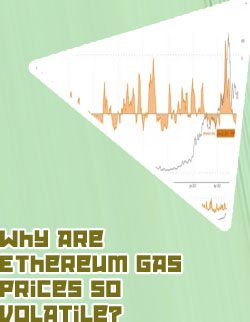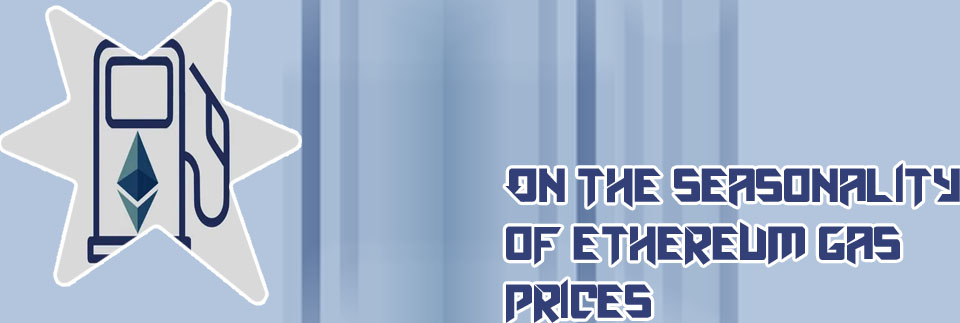High gas prices on the Ethereum network have been causing frustration for users and developers alike. Finding solutions to reduce gas fees is essential to ensure the continued growth and usability of the platform. Below are four articles that provide valuable insights and strategies to help mitigate the impact of high Eth gas prices.
Optimizing Gas Usage: Tips for Cost-Effective Ethereum Transactions

As Ethereum continues to gain popularity in the world of cryptocurrency, users are constantly looking for ways to optimize gas usage and make their transactions more cost-effective. Gas is the fee required to execute a transaction on the Ethereum network, and with high gas prices, it can quickly add up. Fortunately, there are several tips and strategies that can help users minimize their gas costs.
One key tip is to carefully consider the time of day when making transactions. Gas prices tend to fluctuate throughout the day, so users can save money by waiting for times when the network is less congested. Additionally, users should pay attention to the gas limit and gas price settings when making transactions. By setting these values appropriately, users can avoid overpaying for gas.
Another strategy is to use layer 2 solutions such as Optimistic Rollups or zkRollups. These scaling solutions help reduce the amount of data that needs to be processed on the Ethereum network, leading to lower gas fees for users. By taking advantage of these technologies, users can enjoy faster and cheaper transactions on the Ethereum network.
Overall, optimizing gas usage is essential for anyone looking to make cost-effective Ethereum transactions. By following these tips and staying informed about the latest developments in the world of cryptocurrency, users can make the most of their Ethereum
Understanding the Factors Affecting Eth Gas Prices and How to Navigate Them
Gas prices in the world of Ethereum can fluctuate dramatically, impacting users' ability to conduct transactions efficiently. To successfully navigate these price variations, it is crucial for users to understand the factors influencing gas prices. By gaining insight into these key determinants, users can make informed decisions to optimize their transaction costs and ensure timely processing on the Ethereum network.
One of the primary factors affecting gas prices is network congestion. When the number of transactions on the network increases, gas prices tend to rise as users compete to have their transactions processed quickly. Additionally, the complexity of smart contracts can also contribute to higher gas prices, as more computational resources are required to execute these transactions.
Furthermore, gas prices may be influenced by external factors such as market demand and speculation. Traders and investors looking to capitalize on price fluctuations may drive up gas prices, making it more expensive for regular users to conduct transactions on the network.
To navigate these challenges, users can implement several strategies to optimize their gas costs and ensure efficient transaction processing. These include setting appropriate gas limits, scheduling transactions during off-peak hours, and monitoring network congestion to determine the best time to submit transactions.
Exploring Layer 2 Solutions: A Guide to Scaling Ethereum and Lowering Gas Fees
Layer 2 solutions have become a hot topic in the world of Ethereum due to their ability to enhance scalability and reduce gas fees. In simple terms, Layer 2 solutions are protocols that are built on top of the main Ethereum blockchain, providing a way to process transactions off-chain in a more efficient manner. This guide serves as an essential resource for those looking to deepen their understanding of Layer 2 solutions and their impact on the Ethereum network.
One key aspect of Layer 2 solutions is their ability to significantly increase transaction throughput. By moving transactions off the main chain, Layer 2 solutions can process a higher volume of transactions at a fraction of the cost. This scalability is essential for Ethereum to reach its full potential as a global decentralized platform. Additionally, Layer 2 solutions can help lower gas fees, making transactions more affordable for users across the network.
Here are some key takeaways from this comprehensive guide:
- Overview of Layer 2 solutions and their importance in scaling Ethereum.
- Explanation of how Layer 2 solutions work and their impact on transaction throughput.
- Discussion of the benefits of Layer 2 solutions, including reduced gas fees.
- Comparison of different Layer 2 solutions currently available in the market.
- Future outlook for Layer 2 solutions and their
DeFi Strategies: Maximizing Efficiency and Minimizing Gas Costs on Ethereum
As an expert in the field of decentralized finance (DeFi), I found the article on optimizing efficiency and reducing gas costs on the Ethereum network to be highly informative and relevant. The strategies outlined in the article provide valuable insights into maximizing returns while minimizing transaction fees, which is a crucial aspect of DeFi trading.
One of the key points emphasized in the article is the importance of using Layer 2 solutions such as Loopring or Optimism to reduce gas costs. By offloading transactions to these Layer 2 networks, users can significantly lower the fees associated with trading on the Ethereum network. Additionally, the article suggests batching transactions and using limit orders to further optimize gas usage and minimize costs.
The author also touches on the concept of yield farming and liquidity mining, which are popular strategies in the DeFi space. By providing liquidity to decentralized exchanges and other DeFi platforms, users can earn rewards in the form of fees or tokens. However, it is essential to carefully evaluate the risks and potential rewards associated with these strategies before engaging in them.
Feedback from a resident of Barcelona, Spain, named Claudia Martinez, indicates that the article provides practical tips for navigating the complex world of DeFi trading. She found the information on using Layer 2 solutions particularly helpful in reducing gas costs and improving efficiency
